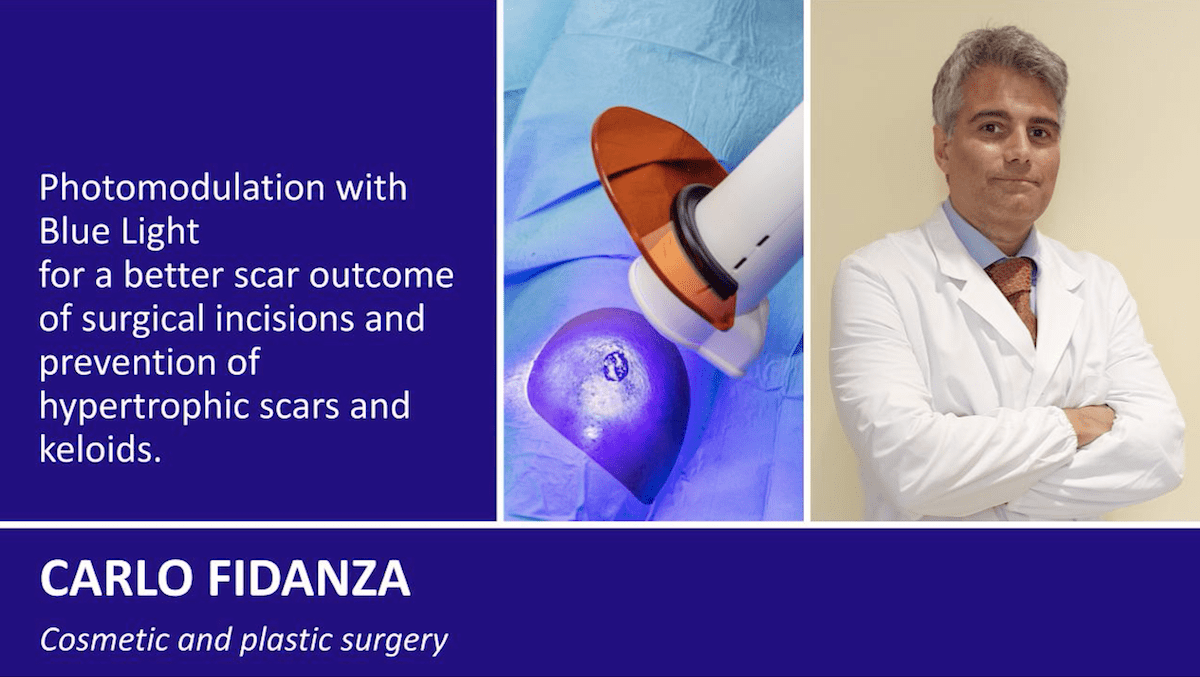
Blue Light Photobiomodulation and scar outcomes
Dr Carlo Fidanza shares in a video his experience with the therapy
Carlo Fidanza, plastic surgeon, shares his preliminary experience with the use of Blue Light Photobiomodulation for a better scar outcome of surgical incisions and for the prevention of hypertrophic scars and keloids.
To watch the video: https://youtu.be/WlH5cgNWeQI

Dr Fidanza has used Photobiomodulation with Blue light for both reconstructive and aesthetic aspects. He started using it in the treatment of keloids, which are hypertrophic scars resulting from aberrant scarring and for which there is no therapy that provides a guarantee of success. The applied protocol involves a complete removal of the keloid followed by a treatment with Blue Light Photobiomodulatio for three minutes, when the wound is open, and then another treatment of three minutes, at stitches removal, two to three weeks later.
Later, he used Blue Light Photobiomodulation on a young boy he had previously operated on to remove six lipomsas. Five months later, the wounds were still presenting dyschromia and were extremely visible. Then he decided to use Blue Light Photobiomodulation on one wound following the protocol of three minutes when the wound was open and, after, three minutes when he removed the stitches, two weeks apart. The difference between the treated wound and the untreated wounds was extremely visible, confirming the extinguishment of the inflammatory process by Blue Light Photobiomodulation.
After that he used Blue Light Photobiomodulation on surgical incisions to remove benign skin neoformations (moles, cysts, fibromas and angiomas) and malignant skin neoformations (epithelial carcinomas and melanomas) with very good results in all cases.
Doctor Fidanza’s advice: “to have the best possible scar in the shortest possible time” use Blue Light Photobiomodulation whenever a skin incision is made, given the extreme ease of therapy and the lack of side effects. According to the Doctor, it is highly recommended on incisions in the body areas that are more prone to forming keloids (the sternal region, the neck, deltoid, and ear region), on facial incisions and in all cosmetic plastic surgery procedures where the appearance of the scar remains a fundamental endpoint.
